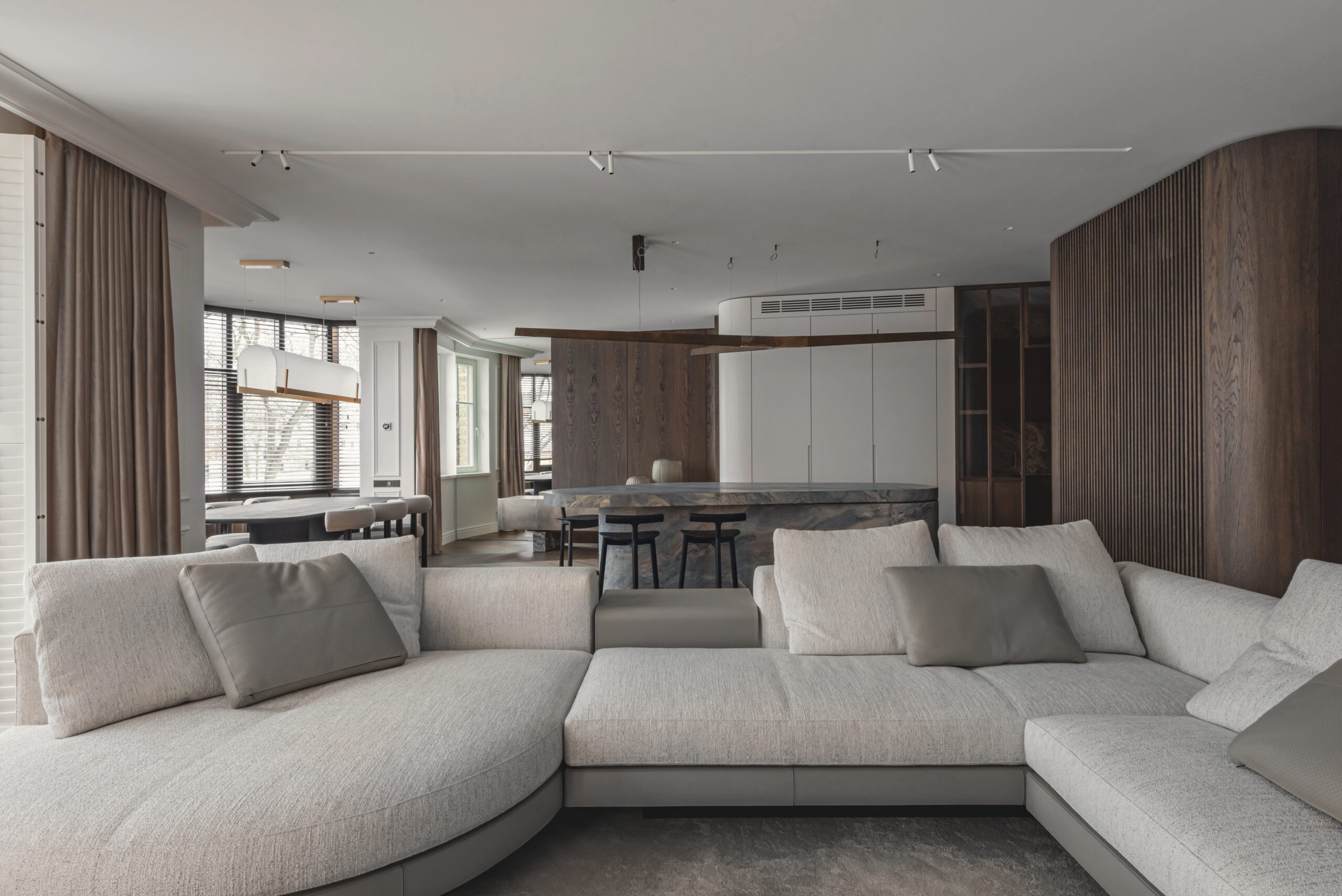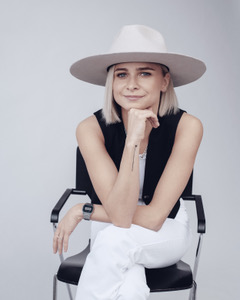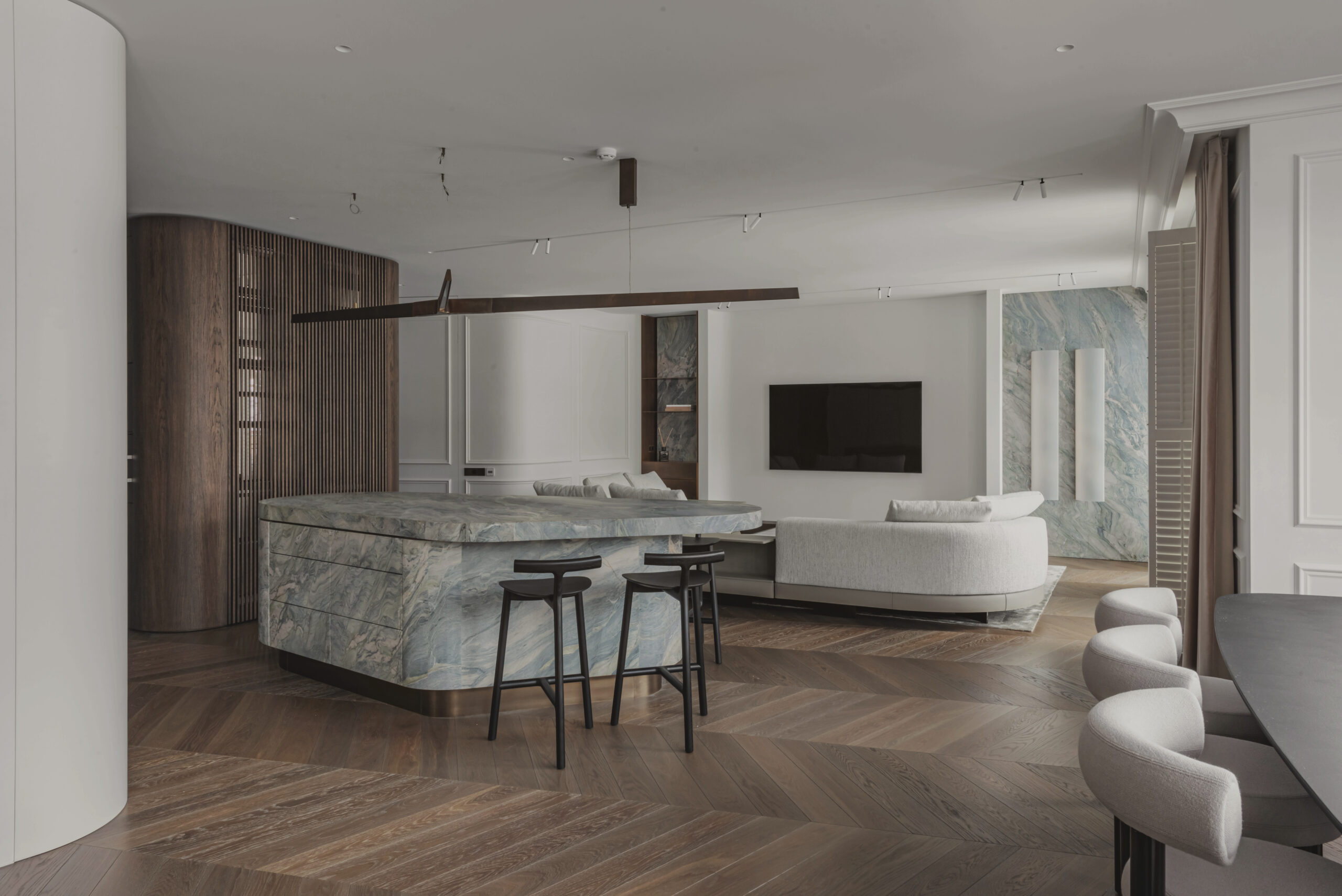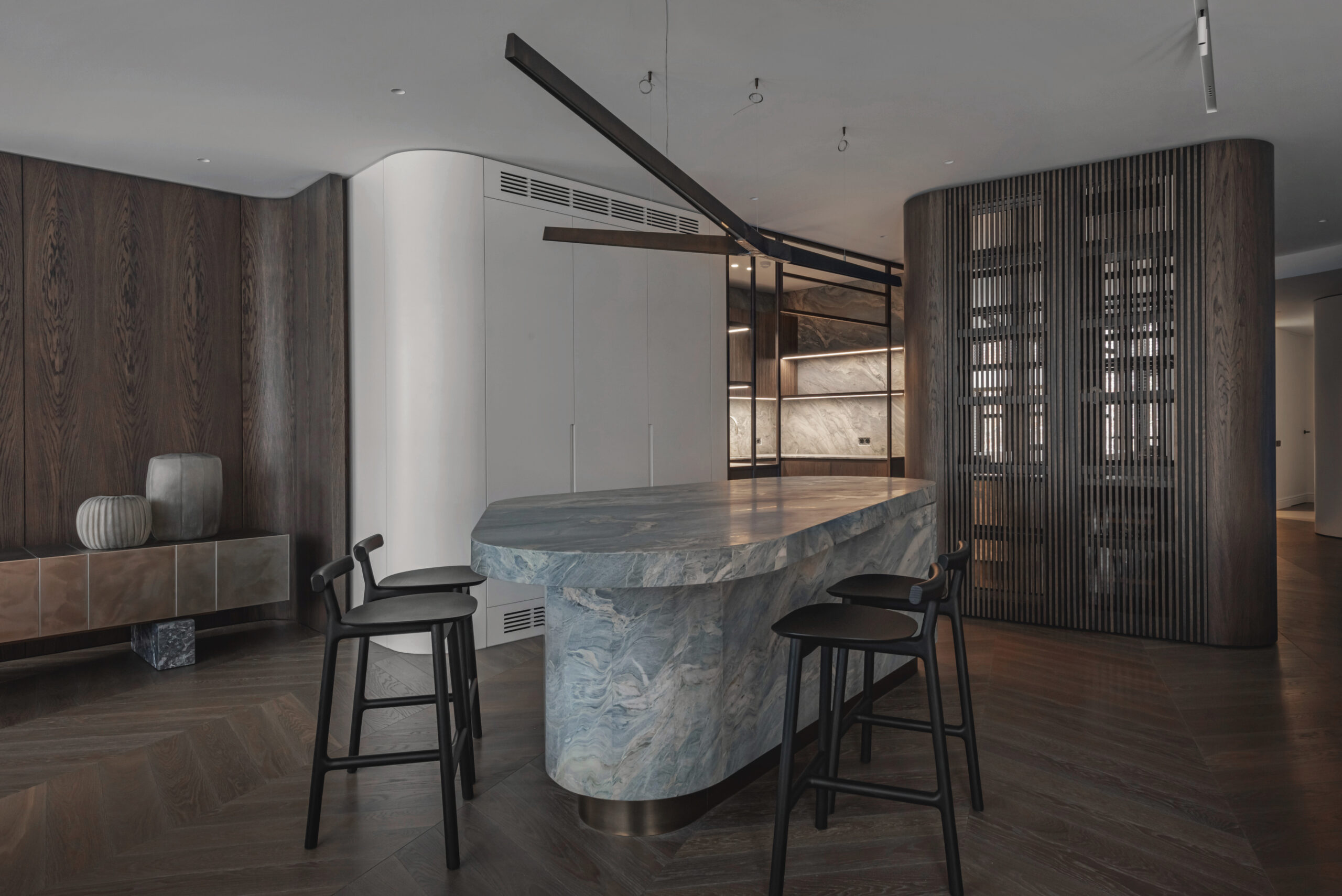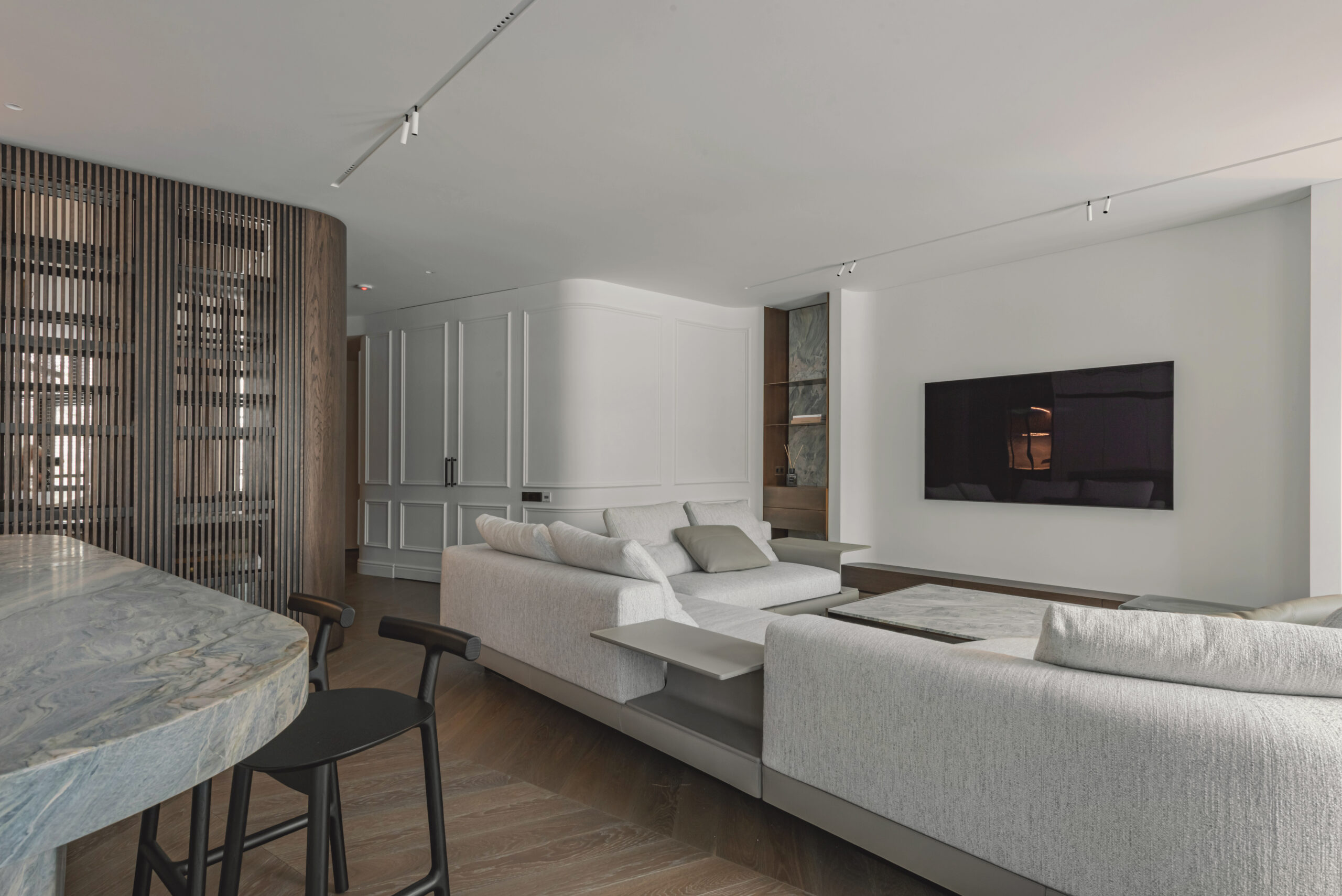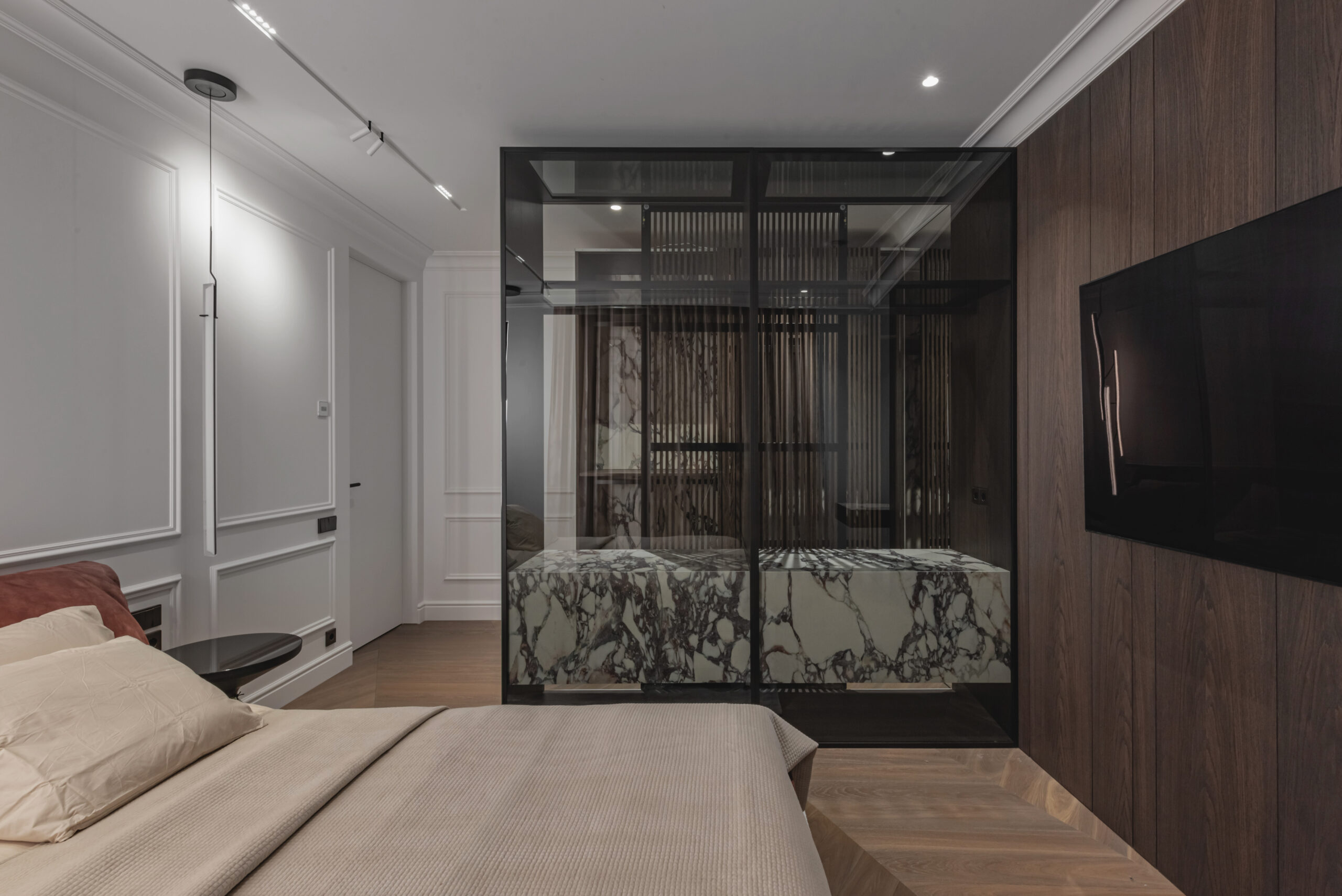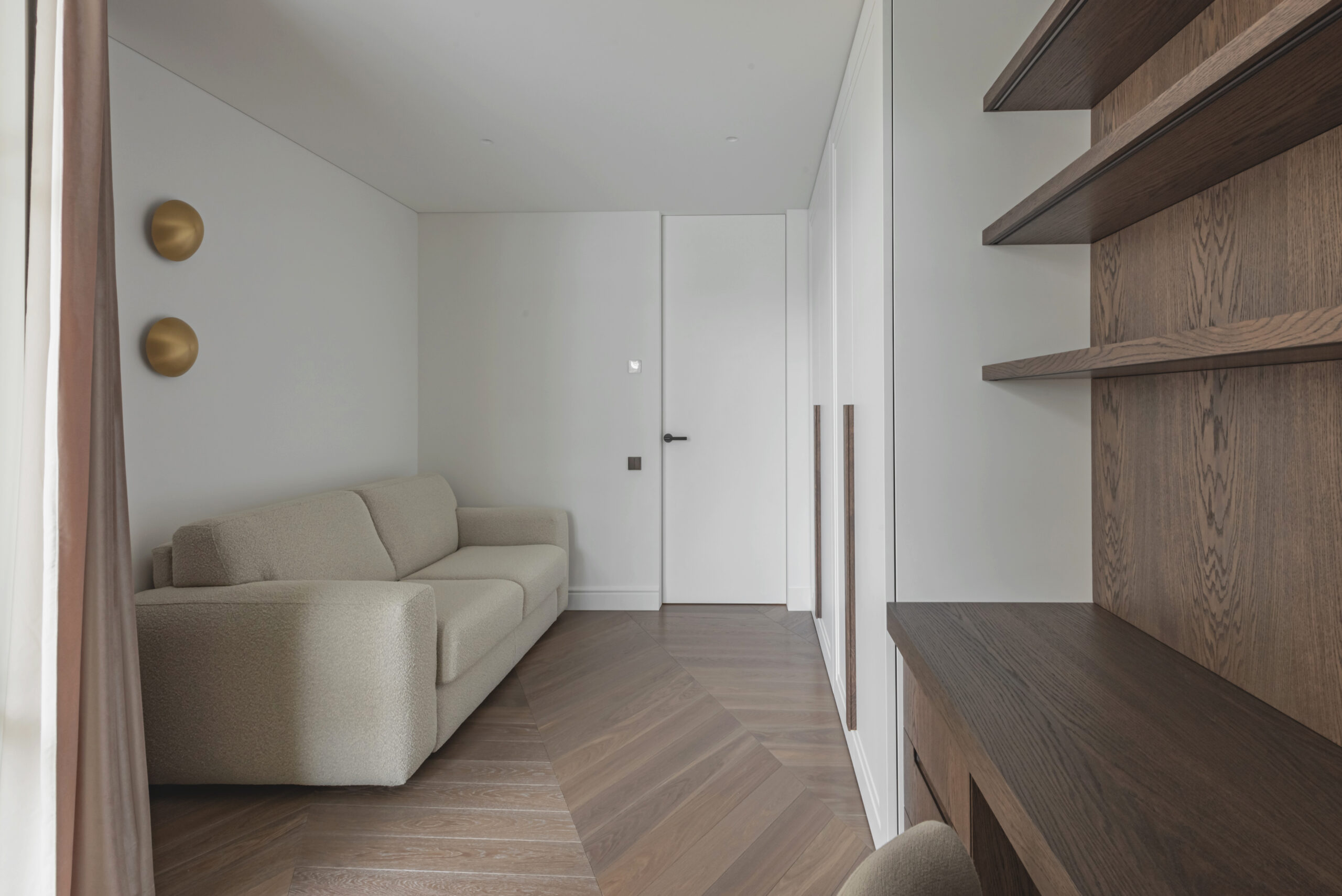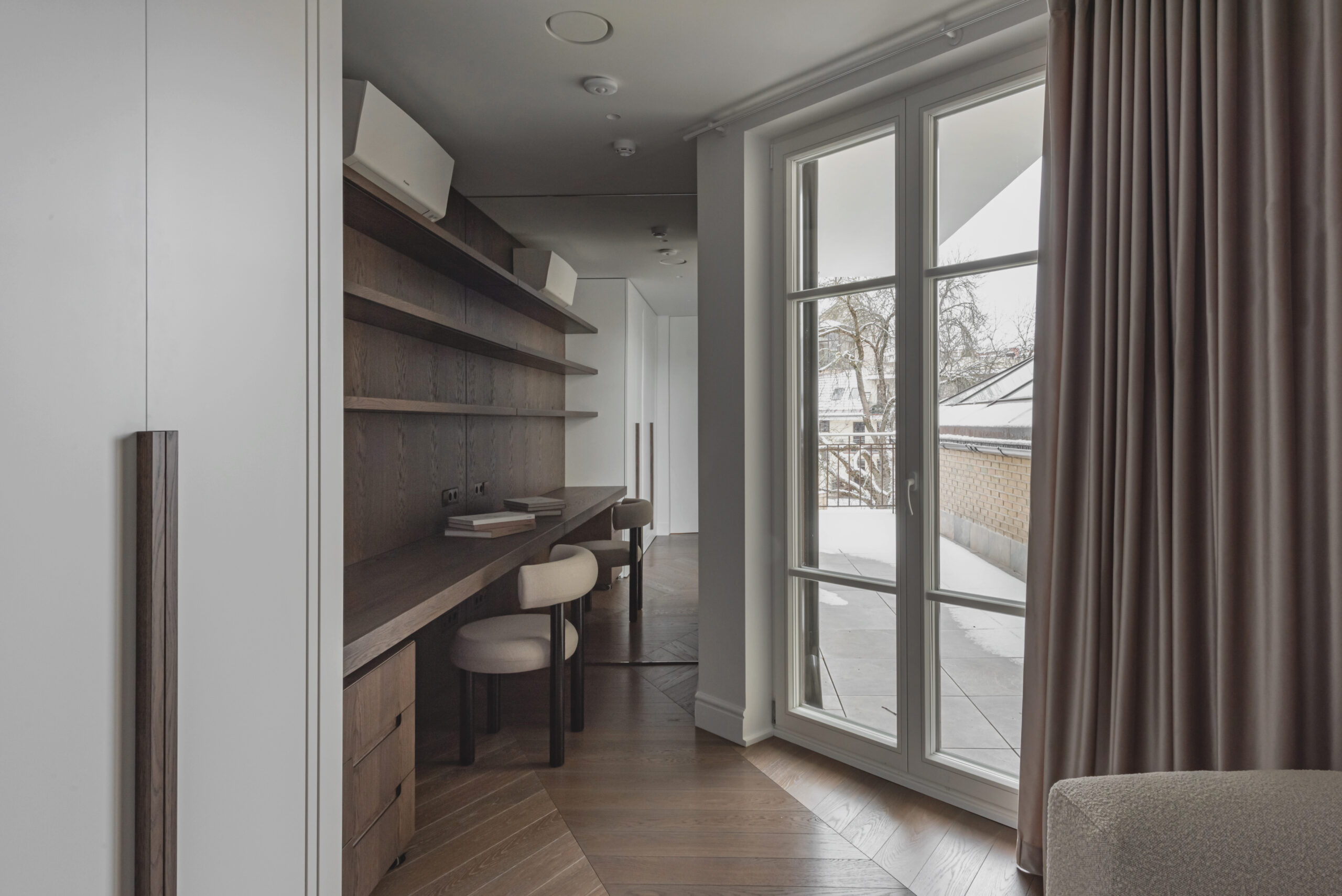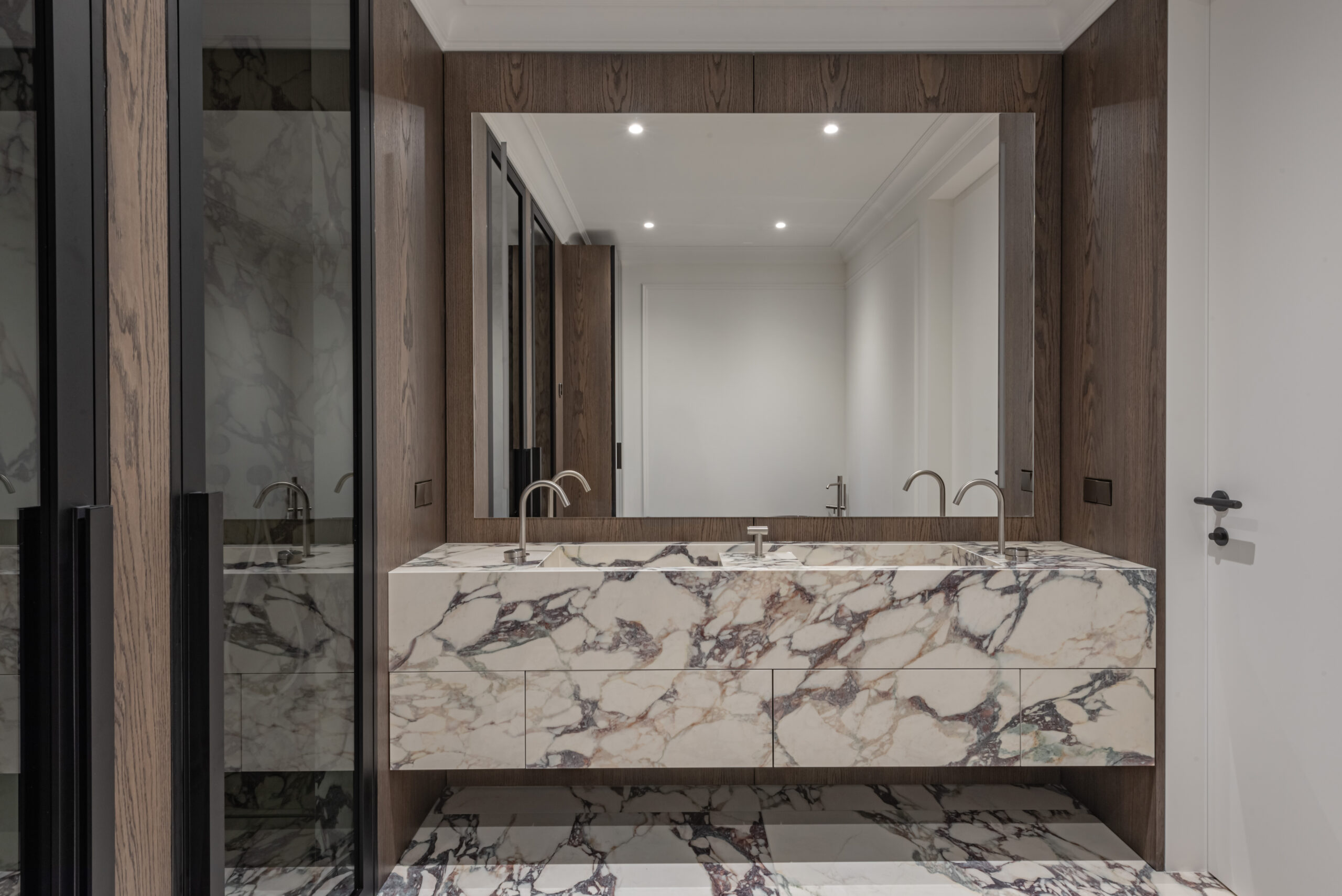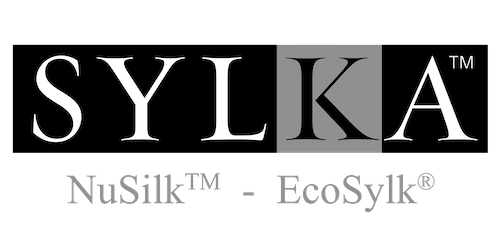How would you describe your personal design style?
Our design style is best described as timeless, with an emphasis on creating spaces that remain relevant and beautiful for years to come. We prioritize the use of high-quality, natural materials that not only enhance the aesthetic of a space but also contribute to its durability and sustainability. This commitment to quality is at the core of every project we undertake.
Additionally, we have extensive knowledge and expertise in high-end furniture and lighting, which allows us to select and integrate pieces that elevate the overall design while maintaining functionality and elegance. We focus on curating a balanced, harmonious environment where every element serves both a practical and visual purpose. Ultimately, our goal is to craft spaces that embody luxury, sophistication, and authenticity, ensuring each project is unique and enduring.
Where does your design inspiration come from?
My design inspiration primarily comes from travel. Exploring new cultures, environments, and architectural styles provides me with a constant flow of fresh ideas. Each destination offers unique perspectives on design, from the use of local materials to the blending of traditional and modern elements, which deeply influences my work. I pay close attention to the way spaces are crafted in different parts of the world, absorbing the subtle details, textures, and craftsmanship that make each place distinctive.
Whether it’s the rich history and elegant architecture of Europe, the minimalist yet functional designs in Japan, or the vibrant energy and modern aesthetics in cities like Los Angeles, travel exposes me to a wealth of creative possibilities. This diverse exposure allows me to incorporate a global sensibility into my designs while maintaining a deep respect for local culture and context. Ultimately, travel allows me to continuously evolve as a designer, bringing a world of inspiration to each project.
In what direction do you feel that design is moving towards in a general sense?
I believe design is moving towards a more brave yet timeless approach, where bold, innovative ideas are being combined with the enduring qualities of natural materials. There’s a growing emphasis on sustainability, with designers increasingly prioritizing materials that are not only visually striking but also environmentally responsible. As a result, we’re seeing a shift towards using high-quality, natural materials that stand the test of time, such as wood, stone, and metal, often in unexpected ways.
At the same time, there is a desire for designs that are more expressive and fearless, blending modern aesthetics with traditional craftsmanship. I see a growing trend towards creating spaces that feel both contemporary and enduring, where materials and design choices create a sense of warmth, authenticity, and sophistication. It’s about pushing the boundaries of design while ensuring that the finished spaces remain timeless and sustainable. Ultimately, the future of design seems to be one where beauty, functionality, and responsibility come together seamlessly.
Name five key themes to consider when approaching design in the future.
Sustainability and Environmental Responsibility
As environmental concerns become more pressing, sustainable design practices will be essential. Future designs will prioritize renewable materials, energy efficiency, and eco-friendly processes, ensuring a positive impact on both the environment and society.
Timelessness and Durability
Future design will focus on creating spaces and products that have lasting value. By using high-quality materials and thoughtful design, the aim is to craft environments that remain relevant, functional, and beautiful over time.
Individuality and Personalization
The future of design will embrace individuality, allowing people to express their unique identities through their spaces. Customization will be key, with designs tailored to the personal needs, tastes, and lifestyles of individuals, creating spaces that reflect and resonate with their inhabitants.
Innovation and Technological Integration
Innovation will be at the forefront, as technology continues to transform design. From smart home features to immersive design experiences, the integration of cutting-edge technology will enhance functionality and create dynamic, responsive spaces.
Wellness and Biophilic Design
As the focus on health and well-being increases, designs will prioritize wellness. Biophilic design, which incorporates natural elements, will be central to creating spaces that reduce stress and enhance emotional and physical well-being.
If you could offer one piece of advice when it comes to designing, what would it be?
If I could offer one piece of advice when it comes to designing, it would be to be brave in your choices. Don’t be afraid to take risks and push boundaries, but always remember to use timeless materials that have enduring beauty and durability. Blending old with new can also create a harmonious balance, where the character of traditional elements enhances the innovation of modern design. The key is to create spaces that feel both fresh and timeless, with a sense of authenticity and thoughtfulness in every decision.
How important are The International Design & Architecture Awards?
The International Design & Architecture Awards are incredibly important as they serve as a platform that recognizes and celebrates the highest standards of design and innovation on a global scale. These awards bring together some of the best talent in the industry, offering a valuable opportunity to showcase work that pushes boundaries, embraces creativity, and upholds excellence in both design and craftsmanship.
